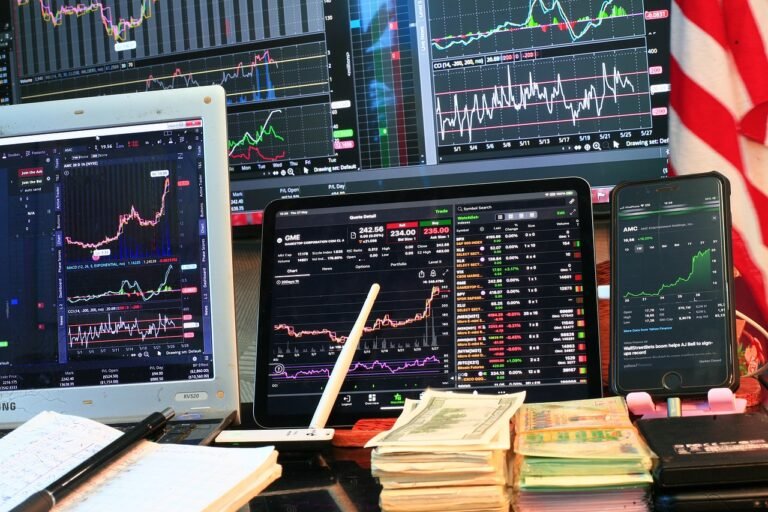
Ever noticed a sudden jump or drop in price on your forex chart, where there seems to be no trading happening in between? That’s called a **Gap**, and it can offer some pretty exciting trading opportunities if you know how to handle it! Let’s break down what a gap is and how you can use it to your advantage in forex trading.
What Exactly is a Gap?
A **Gap** happens when the price of a currency pair opens at a significantly different level than where it closed during the previous trading session. This creates a “gap” on the chart, showing no trading activity between the two price points. Gaps are more common in markets like stocks, but they can also happen in forex, especially after a weekend when the market opens.
Types of Gaps You Should Know
There are several types of gaps that traders watch for, and each one tells a different story about market conditions. Here are the main ones:
1. Common Gap
This is the most basic type of gap and usually happens in a quiet, sideways market. It doesn’t carry much weight, and the price often fills the gap quickly, meaning it goes back to the previous level.
2. Breakaway Gap
A **Breakaway Gap** occurs when the price breaks out of a consolidation zone or a trading range. This usually indicates the start of a strong new trend, and the gap is unlikely to be filled quickly. It’s a great signal to enter a trade in the direction of the breakout.
3. Runaway Gap
This gap happens in the middle of a strong trend. It shows that the current trend still has plenty of momentum, and the price is likely to continue moving in the same direction. **Runaway Gaps** can be excellent opportunities to add to your position in an ongoing trend.
4. Exhaustion Gap
An **Exhaustion Gap** occurs near the end of a strong trend and signals that the trend is running out of steam. This is usually a sign that a reversal might be coming soon. Be careful when you spot this gap, as it could mean the trend is about to turn against you.
Why Do Gaps Happen in Forex?
While gaps are more common in other markets, like stocks, they can also occur in forex for a few reasons:
- Weekend Gaps: The forex market is open 24/5, so when it closes for the weekend, any major news or events that happen during that time can cause a big price gap when the market reopens.
- News Events: Major economic reports, geopolitical events, or central bank decisions can cause prices to gap, as traders react quickly to the new information.
How to Trade Forex Gaps
Now that you know what gaps are and why they happen, let’s talk about how you can trade them to make a profit:
1. Gap Fill Strategy
The **Gap Fill** strategy is simple: many gaps tend to get filled, meaning the price eventually returns to where it was before the gap happened. If you spot a gap, you can wait for the price to start moving back toward the gap and then trade in that direction. This strategy works best with **Common Gaps** or **Exhaustion Gaps**, where a reversal is more likely.
2. Follow the Trend with Breakaway or Runaway Gaps
When you see a **Breakaway** or **Runaway Gap**, the price is usually starting or continuing a strong trend. This is a great time to enter a trade in the direction of the trend. For example, if the price gaps up in an uptrend, it’s often a good signal to go long (buy) and ride the trend. Just make sure to confirm the trend with other indicators before jumping in!
3. Set Your Stop Loss Wisely
Trading gaps can be risky, so it’s essential to manage your risk by setting a **stop loss**. If you’re trading a gap fill, place your stop loss just beyond the gap. If you’re trading a **Breakaway** or **Runaway Gap**, set your stop loss just below the breakout point to protect yourself in case the market reverses.
Tips for Trading Forex Gaps
- Check for News: Gaps often happen due to major news events, so make sure to stay updated on the latest economic reports and geopolitical events.
- Watch the Volume: High trading volume during a gap confirms that there’s strong momentum behind the move, making it more reliable.
- Be Patient: Not every gap is a trading opportunity. Wait for confirmation before entering a trade to avoid jumping in too early.
Conclusion
Trading gaps in the forex market can be a highly profitable strategy if you know what to look for. By understanding the different types of gaps and using strategies like gap fills or following strong trends, you can make the most out of these price movements. Just remember to manage your risk, and always be aware of the news that might cause gaps in the first place.